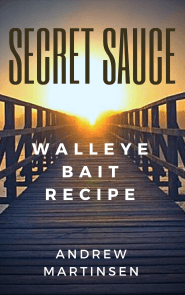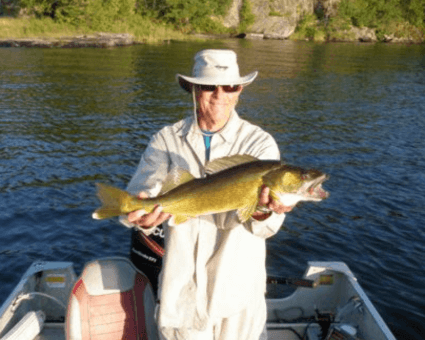Sign up for FREE Walleye Fishing Tips
• Sign up for a Complimentary Copy of
My Report Called "Secret Sauce: The Bait Recipe for More and Bigger Walleyes."

• PLUS, you also get a complimentary subscription to my exclusive email publication, jam-packed with loads of "under-the-radar"
walleye fishing tips that can help you to catch walleyes fast!

Privacy Guarantee: I solemnly pledge never to spam you or sell your email address to anyone, and of course you can unsubscribe at any time.
Contour Trolling
|
Fishfinder Tips
|
Jigging Tips
|
Crankbait Tips
|
Trophy Walleyes
|
More Reports...

Andrew Martinsen's Walleye Fishing Update
Making the Right GPS Selection
Finding a GPS Fish Finder that's Right for You
So, you want a GPS fish finder system? Do some research before going out to buy one. There are different units for different kinds of anglers from lake and pond enthusiasts to off shore experts. With so many GPS systems out there, it can be overwhelming to find one that's right for you.
The transducer and sonar is the probably the most important piece to a GPS system to look at. The sonar will help you see what's beneath the surface of the water while the transducer translates the sonar's impulses into a sound wave that can travel through anything that lies between the water's surface and the lake/river/pond/etc. bottom.
To get the best out of the sonar/transducer part of the unit, find out how big the cone is (how wide the transducer's beam is). The wider the cone, the bigger the view, but as the cone widens with depth, it's sensitivity weakens. This means anglers for larger and deeper waters will need a lower frequency while those fishing smaller waters need to seek out a higher frequency.
Want to know what's out to the side of your boat? Look for GPS units with side scan. Getting a unit with one of these will save you hours of time instead of drifting back and forth to see what's under your boat. With side scan, you can see rock formations, schooling fish, and more. The images coming off of a side scan can show everything in picture-like quality with up to 240 feet. Nifty! This is mostly intended for hard-core fisherman, but it is also a luxury for the novice angler.
You'll also need to look at the unit's wattage. How much power does your GPS require to put out a transmission? The smaller the water you fish in, the lower your wattage will be. If you stick mainly to smaller rivers and lakes, you can squeak by with a little more than 800 watts for a GPS, but if you're an angler who likes to go off shore into the ocean, you want to look at getting one in excess of 3,000 watts. You don't want to get stuck out on the high seas with a GPS unit giving slow reaction time.
Interested in monitoring temperatures, boat speed, and the distance you've traveled? These add-ons are pretty much a standard for most units, but you'll want to check and make sure they're there before making a purchase. Some of the lower end models will leave this up to the buyer as an option.
A quality fish finder will have more pixels on the display screen. The bare minimum is 240V x 160H, but the higher in pixel numbers you go, the better viewing experience you'll have. Anything lower than the bare minimum will come out looking like an Atari game on your GPS unit, and who wants that?
The final thing you need to look at is the mounting option. Can you permanently mount your GPS unit to your sturdy vessel? You attach it temporarily to your boat with a suction cup? Will you just have to hold it indefinitely while you work out where to fish?
A GPS Fishfinder can make fishing an even more rewarding experience.
You're About to Discover Intense Walleye Fishing Techniques that Can Increase Your Walleye Catch Count When You Hit the Water
Inside My Exclusive Email Publication, You'll Discover...
• An underground Secret Sauce bait recipe for catching walleye.
• Under-the-radar walleye fishing tips that can help you to catch walleyes fast!
• How to create an irresistible attraction to
your offering that can make even satisfied fish that aren't hungry snap at it.
• How to catch more and bigger walleyes using the stuff you've already got in your tackle box.
• And much, much more!

Directions: It's easy. Simply fill in
your name and email address and your first of many FREE
underground walleye
fishing reports will be sent to your email box immediately. Go ahead right now...

"Andrew,

25 Inch Walleye Caught at Lake of the Woods
Walleye Fishing Secrets Student Shares an Awesome Catch

Here's a 25 inch walleye caught at Lake of the Woods, Ontario. The
picture is a great memento for me.
I caught it drifting. We caught it amongst some smaller ones that ended up
on the dinner table.
Your advice was helpful in making my trip successful. Thank you!"
- Russell K.
Join thousands of anglers throughout North America who are catching more and bigger walleyes from shore or on a boat in lakes, rivers and streams:
Join thousands of anglers throughout North America who are catching more and bigger walleyes from shore or on a boat in lakes, rivers and streams:

If you've been wanting to get more sastifaction from your
walleye fishing outings, sign up to my
FREE
walleye fishing catching email publication!
Great Fishin' to You! (Always),
Sincerely,
Andrew Martinsen
WalleyeFishingSecrets.com
WalleyeFishingSecrets.com


